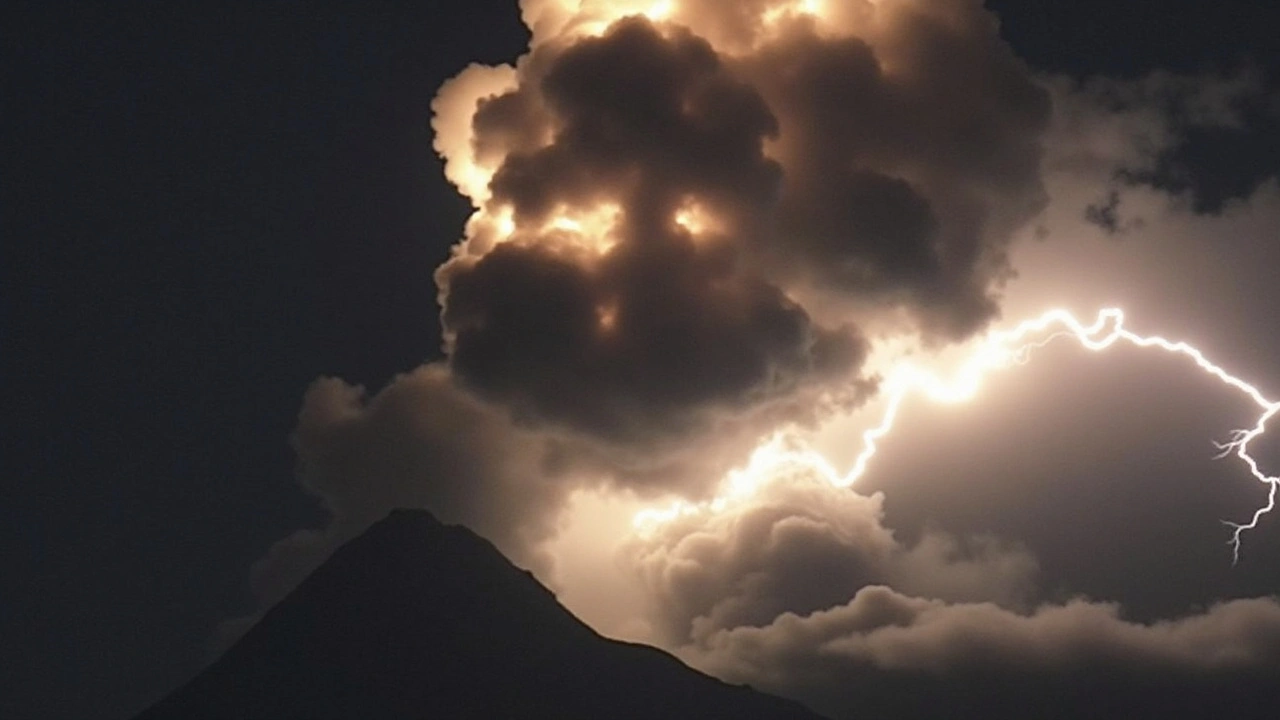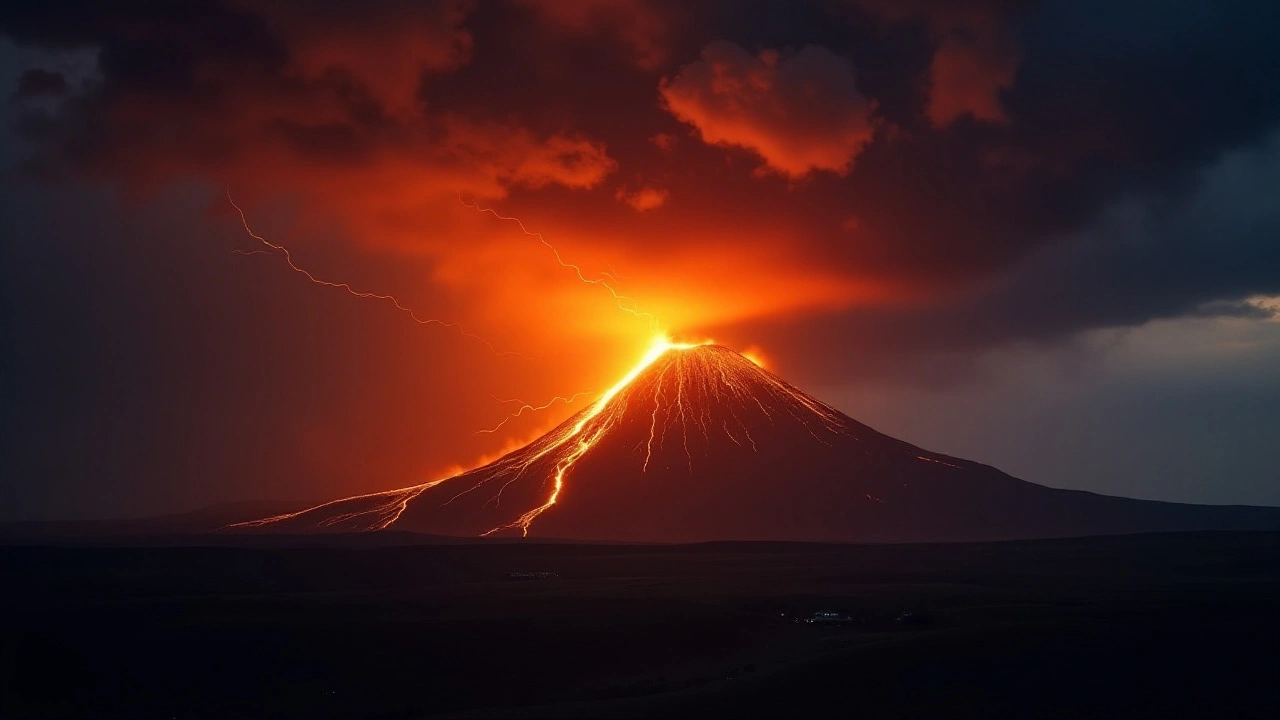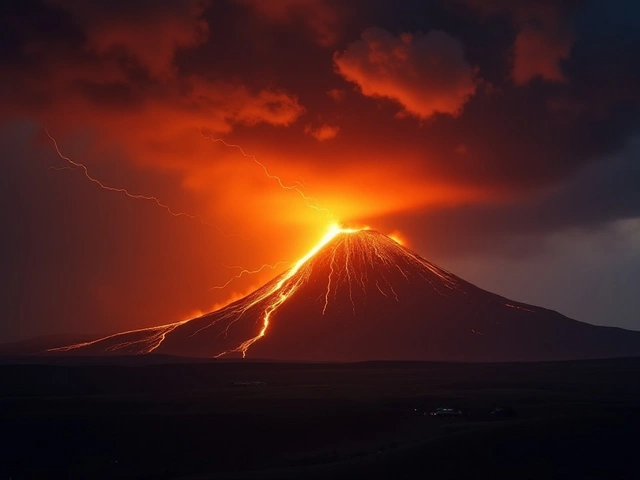Massive Earthquake and Volcanic Eruption in Kuril Islands
On an otherwise ordinary day, the Kuril Islands in Russia were jolted awake by a powerful earthquake with a magnitude of 7.0. The tremor, striking at a depth of around 50 kilometers, sent shockwaves across the region. The seismic event not only caused significant structural damage but also prompted a spectacular geological reaction. The Raikoke volcano, which had been lying dormant for nearly a century, erupted with an unexpected ferocity.
Raikoke Island, part of the Russian Kuril Islands chain, had been silent for decades, leading many to believe it might remain so. The sudden earthquake, however, altered that perception dramatically. Ash plumes rose high into the stratosphere, painting a vivid reminder of nature’s unpredictable power. The eruption's immediate impact was noticeable; the sky turned ashy gray, and air quality deteriorated.
Impact on Air Travel and Local Ecosystems
The eruption's influence extended far beyond the island. Ash clouds from volcanic eruptions present serious risks to air travel, particularly to jet engines which can malfunction when exposed to volcanic ash. Consequently, aviation authorities wasted no time issuing warnings to reroute flights and avoid the affected airspace. Given the Kuril Islands’ location near significant air traffic routes, this was not a minor disruption.
Besides air travel, the eruption had potential ramifications for local ecosystems. Volcanic ash can enrich soil in the long term, but its immediate deposit on plants can inhibit photosynthesis, affecting flora and subsequently the fauna dependent on them. Marine life could also be impacted due to the potential of volcanic ash contaminating the water, adding to the challenges faced by already delicate ecosystems.
Historical Context of Raikoke Volcano
The Raikoke volcano has a fascinating history. Its last notable eruption occurred in 1924, and before that, in 1778. These eruptions, although significant, were not as heavily monitored as today’s event due to technological limitations. Modern monitoring technologies have provided more insights into volcanic activities, yet predicting such sudden eruptions remains a challenge.
Government Response and Monitoring Efforts
Local and national authorities in Russia responded swiftly to the dual crisis. Emergency services were on high alert, focusing on potential evacuation plans if further seismic activity made it necessary. Scientists set up additional monitoring equipment to keep a closer watch on the volcano's behavior. The main goal was to ensure public safety and to minimize damage.
Meanwhile, an international team of volcanologists and seismologists convened to study the eruption’s characteristics. Understanding what triggered the volcano after nearly 100 years of dormancy could provide vital data for future predictive measures. Early warnings and understanding volcanic patterns could save lives and reduce economic tolls in regions prone to such natural disasters.
Community and Social Impact
The sudden natural calamity has also had a significant social impact. The communities residing on the islands and nearby coastal regions are on edge, many living in temporary shelters provided by the authorities. Schools and businesses have temporarily closed, adding to the disruption of daily life. Reports of trauma, especially among children, have emerged, necessitating the involvement of psychological services to help residents cope with the stress and anxiety resulting from the earthquake and eruption.
As of now, the focus remains on caution and vigilance. With authorities monitoring the Raikoke volcano closely, residents are advised to stay updated with official announcements and be prepared for any emergency instructions. This event serves as a stark reminder of the inherent unpredictability of nature and the importance of readiness in the face of such unpredictable occurrences.
Advancements in Prediction and Preparedness
The Raikoke eruption has reignited discussions about advancements in geological prediction and preparedness. While scientific understanding of earthquakes and volcanic activities has grown considerably, there remain gaps. Innovations in satellite imagery and sensing technologies are currently being explored to enhance real-time monitoring and early-warning systems.
Collaborative efforts between international geological institutions could also benefit regions with similar geological profiles. By sharing data and expertise, the global community can better prepare for and mitigate the effects of such natural disasters. Thus, investment in science and technology, along with public awareness campaigns, is crucial in bolstering resilience against future earthquakes and volcanic eruptions.

Future Outlook
Looking ahead, the current priority is stabilizing the immediate situation. Safeguarding public health, restoring air travel routes, and protecting the environment are the focus areas. Over the long term, the lessons learned from this eruption and the subsequent response strategies will likely refine disaster preparedness protocols not only for Russia but for other nations situated along tectonic fault lines.
In conclusion, the earthquake and subsequent eruption of Raikoke volcano present a challenging scenario that underscores the volatile nature of our planet. The dual disaster has had wide-ranging impacts, touching lives, ecosystems, and interconnected global systems like aviation. It is a compelling call to action for enhanced scientific research, international cooperation, and comprehensive disaster readiness.



Comments
When you consider the subduction of the Pacific Plate beneath the Okhotsk microplate, the interplay between seismic energy and magmatic systems becomes almost inevitable.
A magnitude‑7 event at 50 km depth injects a sudden pulse of stress that can tip a dormant magma chamber over its failure threshold.
Raikoke’s century‑long silence was not a sign of inactivity but a reflection of a slowly pressurizing system biding its time.
The rapid depressurization caused by the earthquake can create fractures that act as conduits for magma to ascend.
Moreover, the co‑seismic shaking can destabilize the overlying rock, lowering the effective confining pressure on the volatile‑rich melt.
Laboratory experiments on analogue materials have shown that shear strain can accelerate volatile exsolution, effectively turning a silent volcano into a roaring one.
Remote sensing data from the last few weeks already indicated subtle inflation of the summit, a detail that most casual observers missed.
Coupled with the observed increase in fumarolic activity, these signals painted a picture of a system primed for eruption.
The ash plume reaching the stratosphere is a textbook example of how volcanic aerosols can influence climate on short time scales.
Sulphate particles injected at that altitude can reflect sunlight, leading to a temporary cooling effect of a few tenths of a degree.
Air traffic controllers worldwide scrambled to reroute flights, a reminder that geophysical phenomena do not respect human schedules.
The local ecosystems will experience a paradoxical boost; while immediate ashfall suffocates foliage, the longer‑term soil enrichment can spark a burst of primary productivity.
Marine biologists are already monitoring phytoplankton blooms that may follow the nutrient influx from ash‑laden runoff.
From a hazard management perspective, the event underscores the importance of integrating seismic and volcanic monitoring networks.
Real‑time data sharing between Russian institutes and international bodies can shave precious hours off response times.
In summary, the 7.0 quake was not just a random shake, but a catalyst that unlocked a cascade of geological processes, each with its own set of societal and environmental ramifications.
Well, look at Mother Nature pulling a double‑cross, shaking the ground and then lighting up the sky like a fireworks show for the bored. It's as if the planet decided to throw a surprise party and forgot to send out invitations. The seismic smack of 7.0 was the drumroll; the volcanic blast was the grand finale. Airlines will be humming a tune of canceled routes while tourists get an unplanned lesson in volcanic ash. If you asked me for a vacation spot, I’d advise staying far from any map that marks Kuril Islands in red.
Behold the drama of Earth herself, a titan whose fury is both a lament and a proclamation. The tremor rattled the very bones of the archipelago, and the volcano answered with a roar that echoed through the heavens. Such cataclysmic theatre forces us, humble mortals, to confront the fleeting nature of our constructs. May the resilient spirit of the islanders endure amidst ash and sorrow.
For those concerned about ash inhalation, the CDC recommends N95‑type masks and staying indoors with windows sealed. If you are in the flight corridor, airlines typically reroute around the ash cloud to avoid engine damage, so checking flight status is essential. Volcanic ash can also affect water supplies; using bottled water until local authorities confirm safety is prudent.
Volcanoes love a good shake.
One could argue that the Earth's restless spirit merely mirrors humanity's own inner turbulence. While some proclaim this as a warning, I suspect it is simply nature exercising its right to be unpredictable. The ash that darkens the sky is not a curse but a reminder that clarity is often found after the dust settles. Thus, instead of fearing the eruption, we might appreciate the fleeting beauty of its plume.
Ah, the Kuril saga, a symphony of tectonic plates, a ballet of magma, a spectacle that, frankly, the world seldom witnesses! When the earth convulses with a magnitude seven, it does not merely shake-it communicates, it whispers, it shouts! The ensuing eruption, a cascade of ash, a torrent of molten rock, a reminder that our planet, in all its grandeur, remains ever‑merciless.
Great, another reason to cancel my weekend plans. Who needs clear skies anyway?
Look, we can't just sit back and watch this disaster unfold; we need coordinated relief efforts right now. Local NGOs should partner with international agencies to distribute masks and food to displaced families. Authorities must keep the evacuation routes clear and provide real‑time updates to prevent panic. Together we can turn this crisis into a showcase of effective solidarity.
Esteemed colleagues and community members, let us channel our collective resolve to mitigate the impacts of this event. By adhering to safety protocols and supporting emergency services, we reinforce the fabric of resilience. Your proactive participation can safeguard lives and expedite recovery. Let us stand together, unwavering in purpose, as we navigate the challenges ahead.